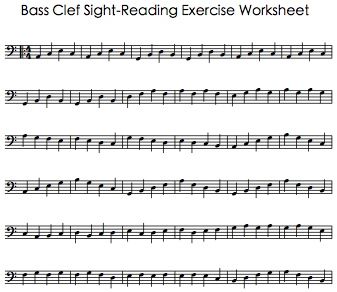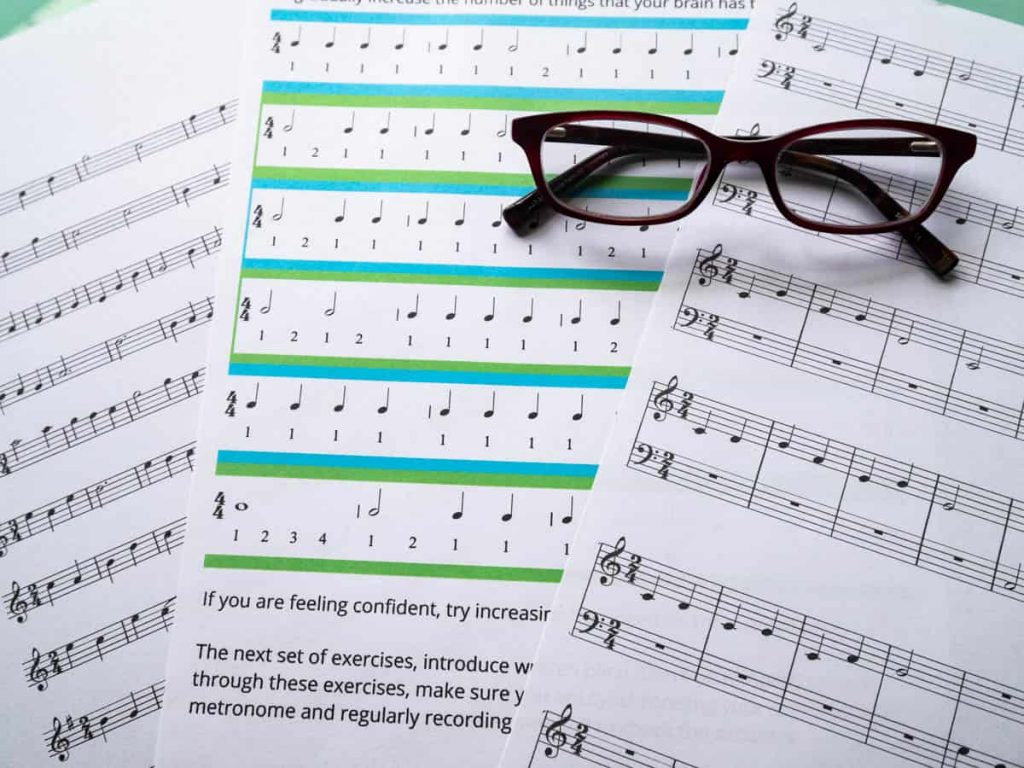One of the recurring nightmares a beginner musician will always face is sight-reading. Every musician who is just beginning their career or journey into the world of music will find sight-reading challenging initially.
Some people have consulted with other professionals to help them find their way around sight-reading. Still, this article will teach you how to sight-read for beginners if you cannot afford a professional or tutor.
There are a couple of things you can engage in daily that will help with sight-reading, and these tips and tricks we are about to show you are simple things you can do daily to help you with sight-reading. So check out every one of these tips outlined below.
Content Navigation
Get Familiar With Variety Of Rhythms
Sight-reading doesn’t appear the same to everyone, meaning the way a vocalist views sight reading isn’t the same way a guitarist will view it.
However, the rhythm seems to be one thing or factor everyone shares in common when talking about sight-reading. Therefore, you will be prepared for any sight-reading situation if you get familiar with different rhythms. There are websites and pages online that will help you get familiar with rhythms.
Get Familiar With Key Signatures
One factor that will help instrumentalists, guitarists, and vocalists in sight-reading is memorizing key signatures. This means you have to be aware of the flats or sharps you encounter in any sight-reading exercise.
If your timbre seems to be more comfortable in specific key signatures, sight-reading will be very easy for vocalists. Getting familiar with key signatures might take a little time, but it makes practicing sight-reading easier for everyone.
Read This: Does Playing The Piano Make You Smarter?
Identifying Your Scales
If you want to memorize your key signatures, you should be able to memorize scales. This is crucial for instrumentalists as it also helps create muscle memory for hand placement and fingerings.
It makes it easy for you to know how to begin sight-reading, and you will have a good idea of what you are doing with your hands. However, scales serve a different purpose when it comes to singers.
So many singers prefer using scales as Solfege which describes an exercise that makes it easy to sight-read vocal music where every scale degree has a coordinating syllable assigned to it.
Vocalists will be able to memorize intervals with the help of Solfege, and identifying pitches will be straightforward no matter what key they are found in. You can also visit web pages that will tell you more about solfege.
On the other hand, vocalists that do not make use of Solfege can also practice with scales. The purpose of this is for vocalists to identify tonality differences in minor and major keys. It also helps vocalists in identifying intervals between pitches.
Learn To Practice Without A Safe Net
Almost everyone has tried using a safety net at some point in their lives when trying how to sight-read. It’s like saying to yourself that you can try sight-reading a particular thing to be sure.
A perfect example is an instrumentalist who looks down on his hands when trying to sight-read, while a vocalist uses a piano to define hard-to-read notes. No matter what you use as a safety net, practicing without safety nets will turn out helpful.
Safe nets take away the chances of you making mistakes, and making mistakes in any area of your life is totally okay. How will you learn if you do not make one or two mistakes?
Read This: What Is An Arpeggio In Music
How To Sight Read For Beginners

Practice Sight Reading With Variety Of Musics
You have no idea what you will end up with in terms of sight-reading, and you could either be presented with notes from a slow jazz ballad or tango music. In addition, they may present you with notes containing different languages if you are a vocalist, so familiarizing yourself with different music is one of the best ways to avoid panicking.
You should also get familiar with various scores and rhythms because it will help you feel relaxed when presented with a new piece of musical notes.
Exam The Piece You Are Sight Reading
It is essential that you carefully digest the music you have right in front of you before singing or playing. You must read carefully through the notes and try to tap out the rhythm.
It will be helpful to spot some page turns and spots that might cause you some problems when singing or playing.
Determine Annotations In The Piece
There is more to sight-reading than just rhythm and notes. It would help if you considered looking for musical direction or dynamic changes within a musical piece.
Time signatures and tempo are things you should also pay close attention to, and being able to figure out annotations shows you are capable of handling music in general.
Make Out Markings On iPad, Tablet, Or Paper
If you are permitted to make markings before starting, go ahead and do it because it is important to map out areas that might prove a problem for you, just like we mentioned earlier in this article.
When a vocalist spots a big jump in a vocal line, you must highlight or circle it. Sight-reading might cause you to remember many things, so it is totally okay to work with visual reminders as they have proved to be helpful over the years.
Breathe, Relax, And Continue Even After A Mistake

Trust me; everyone knows getting perfect with sight-reading can be very difficult. But, just like every other exercise, practicing more often will help you get better at it.
This is why focusing on mistakes when sight-reading isn’t the right thing to do, and you shouldn’t consider stopping to correct any mistake you make. Instead, you have to keep going and keep in mind that testing your ability is sure of getting better at what you love doing.
Related Posts
5 Best Speakers For Piano Music 2023
Does A Piano Need To Be Tuned?
How Many Keys Are There On A Piano

